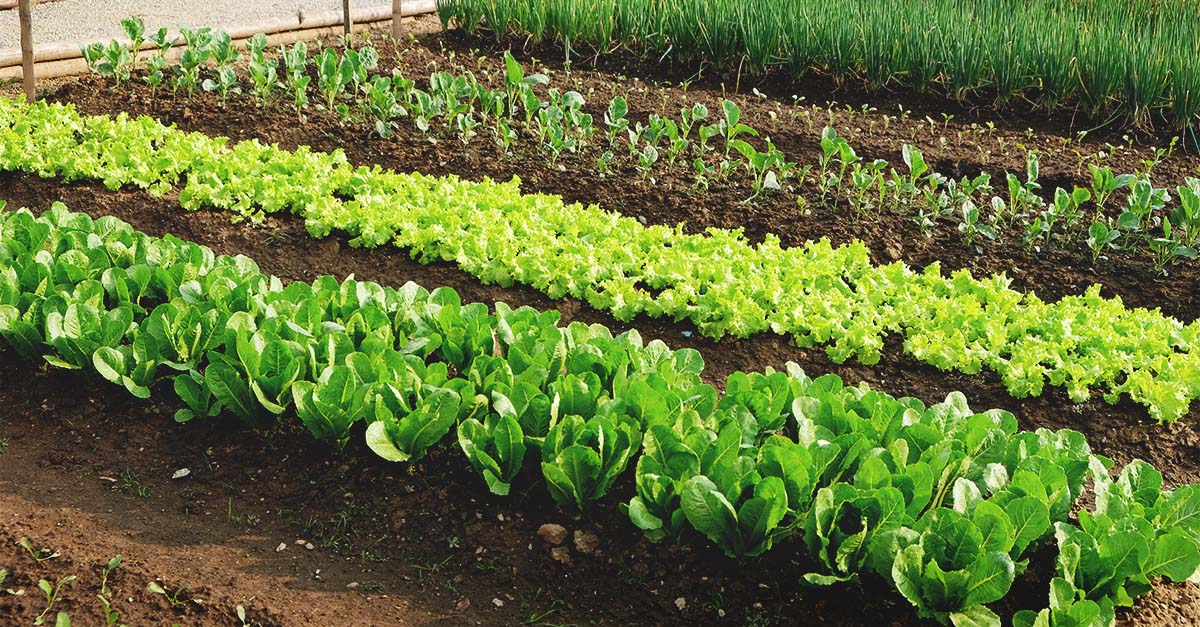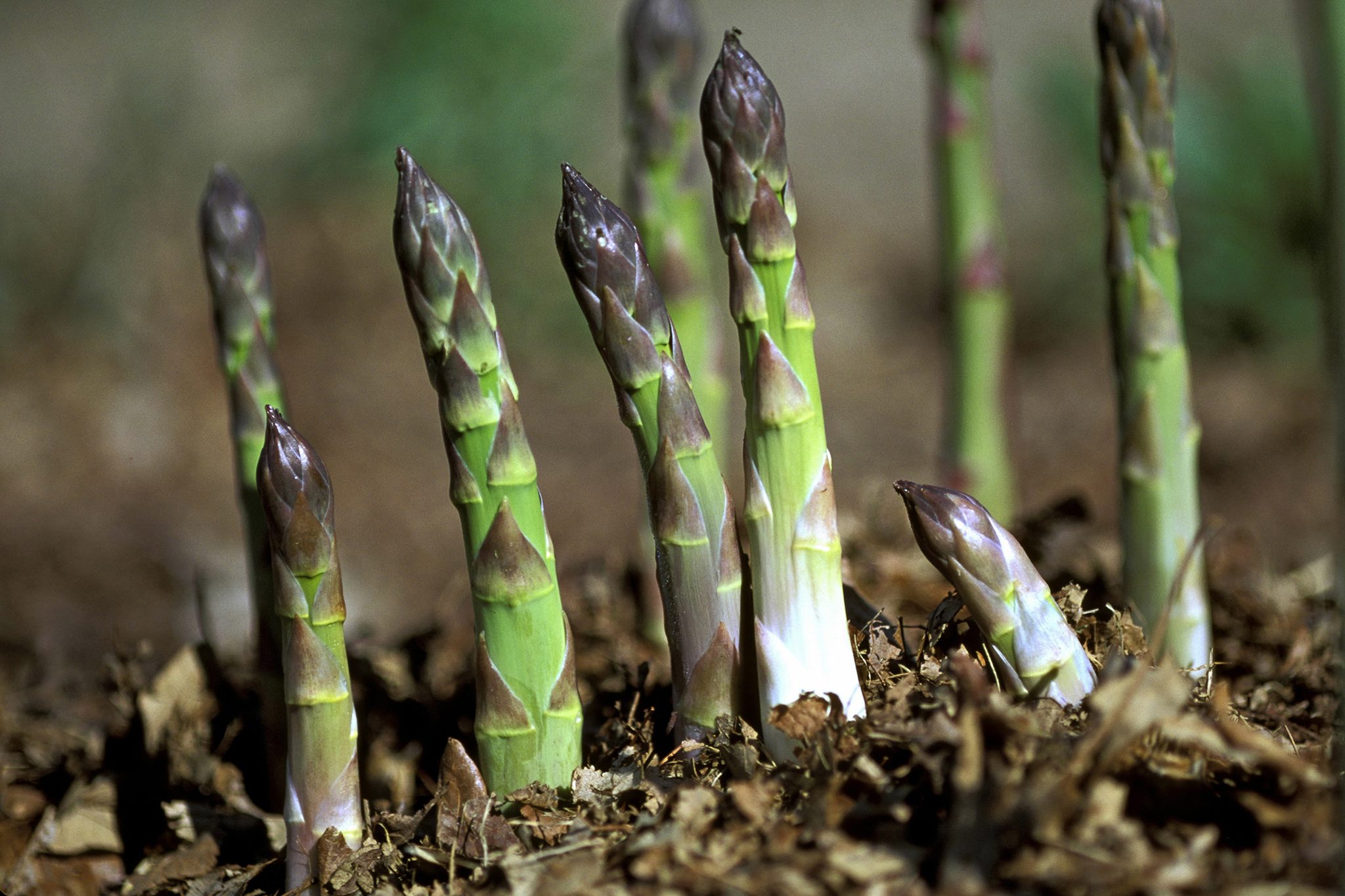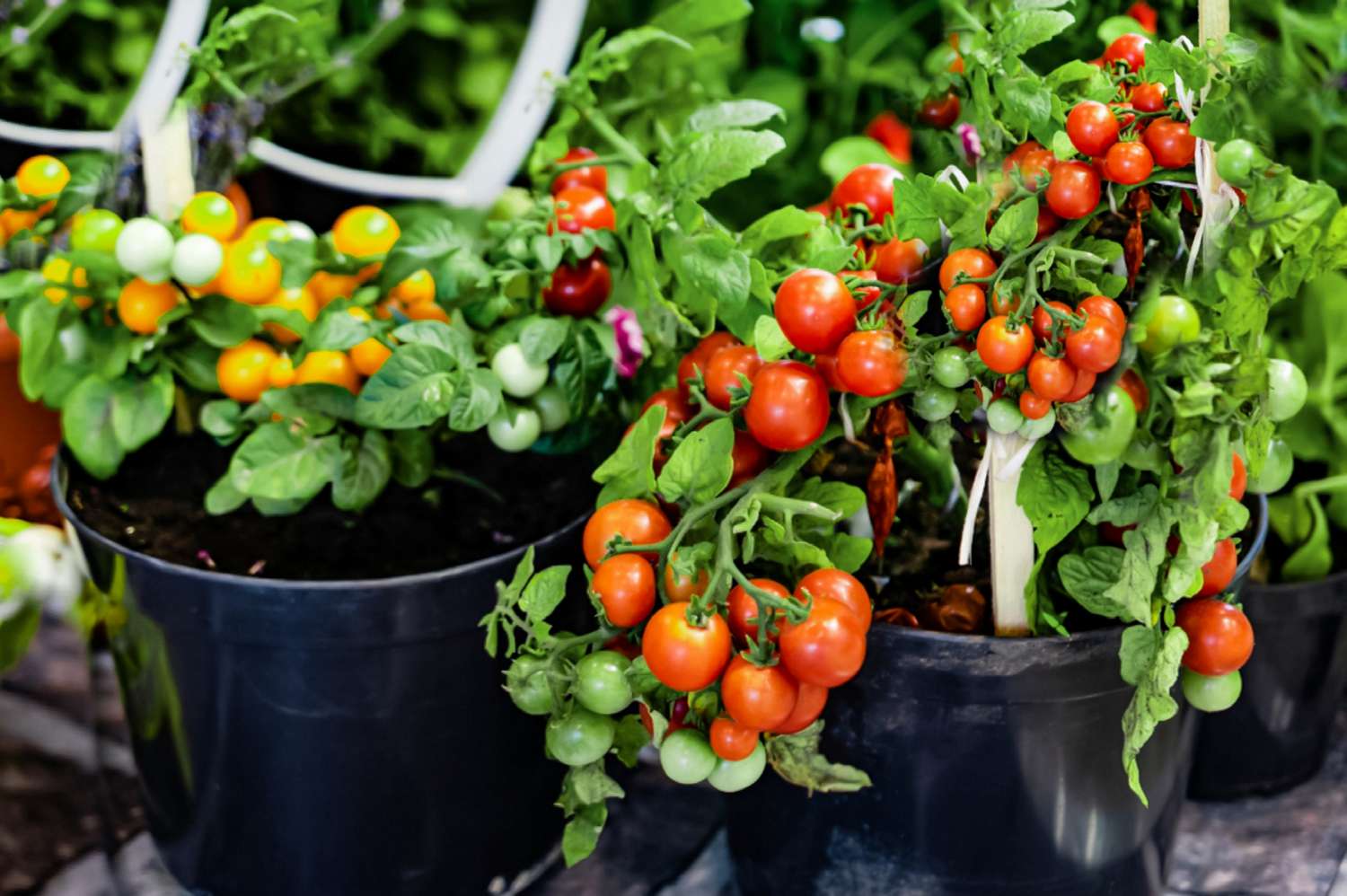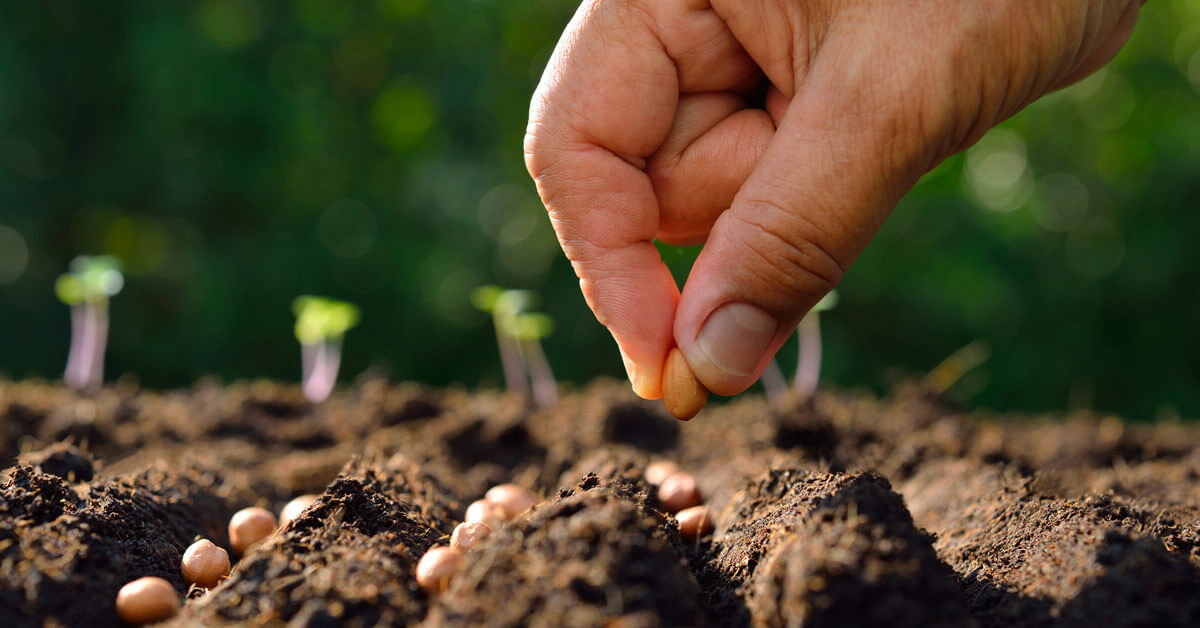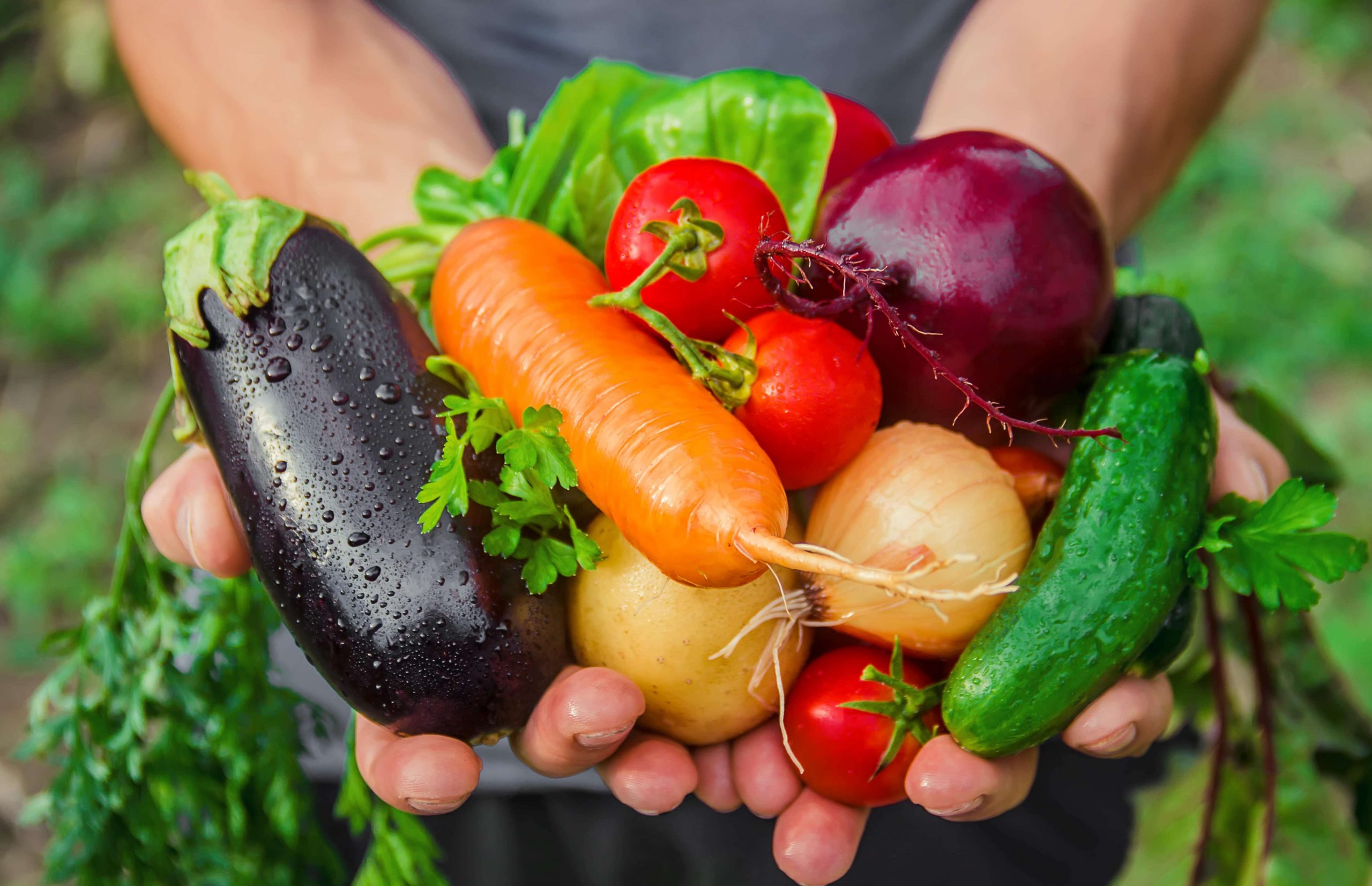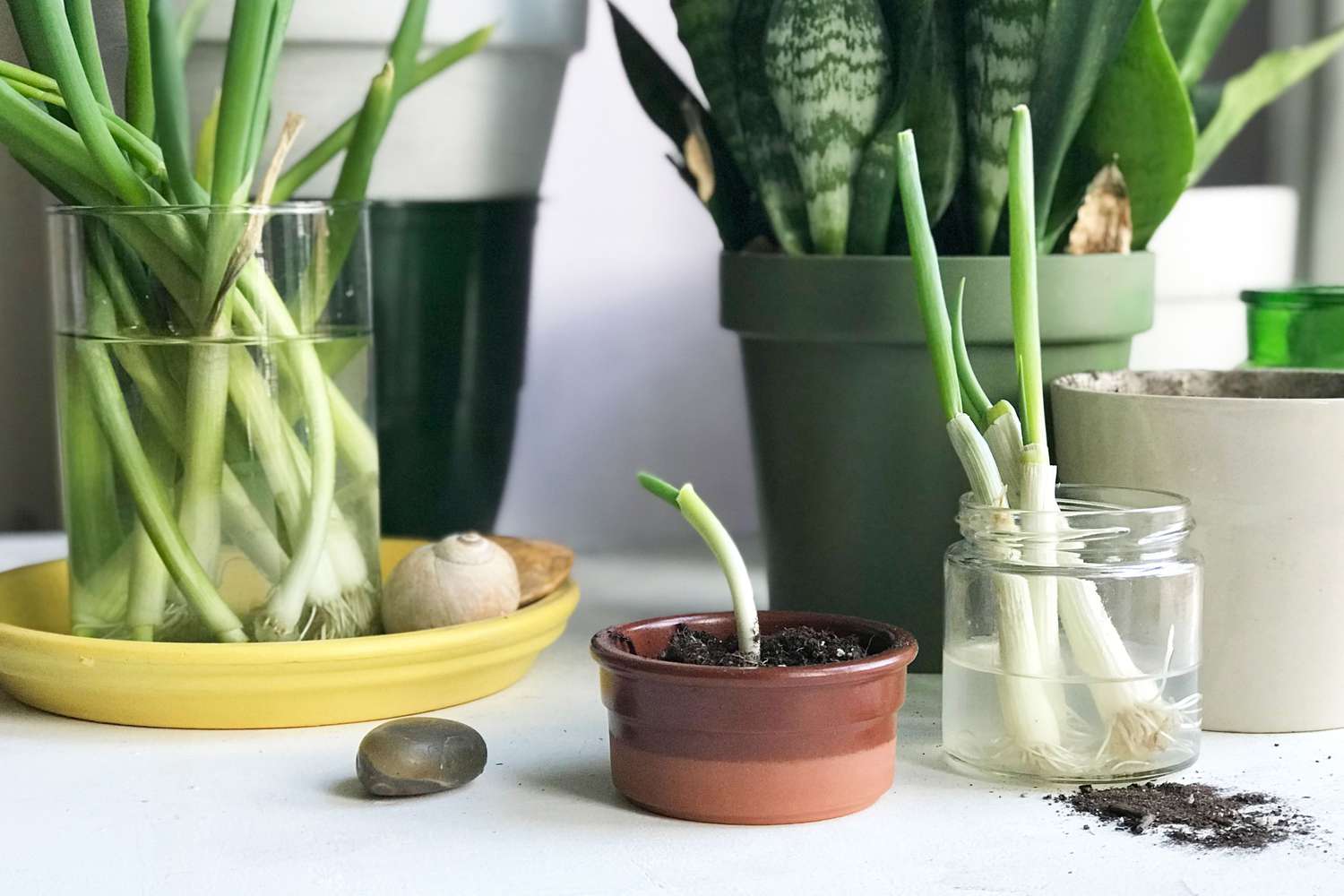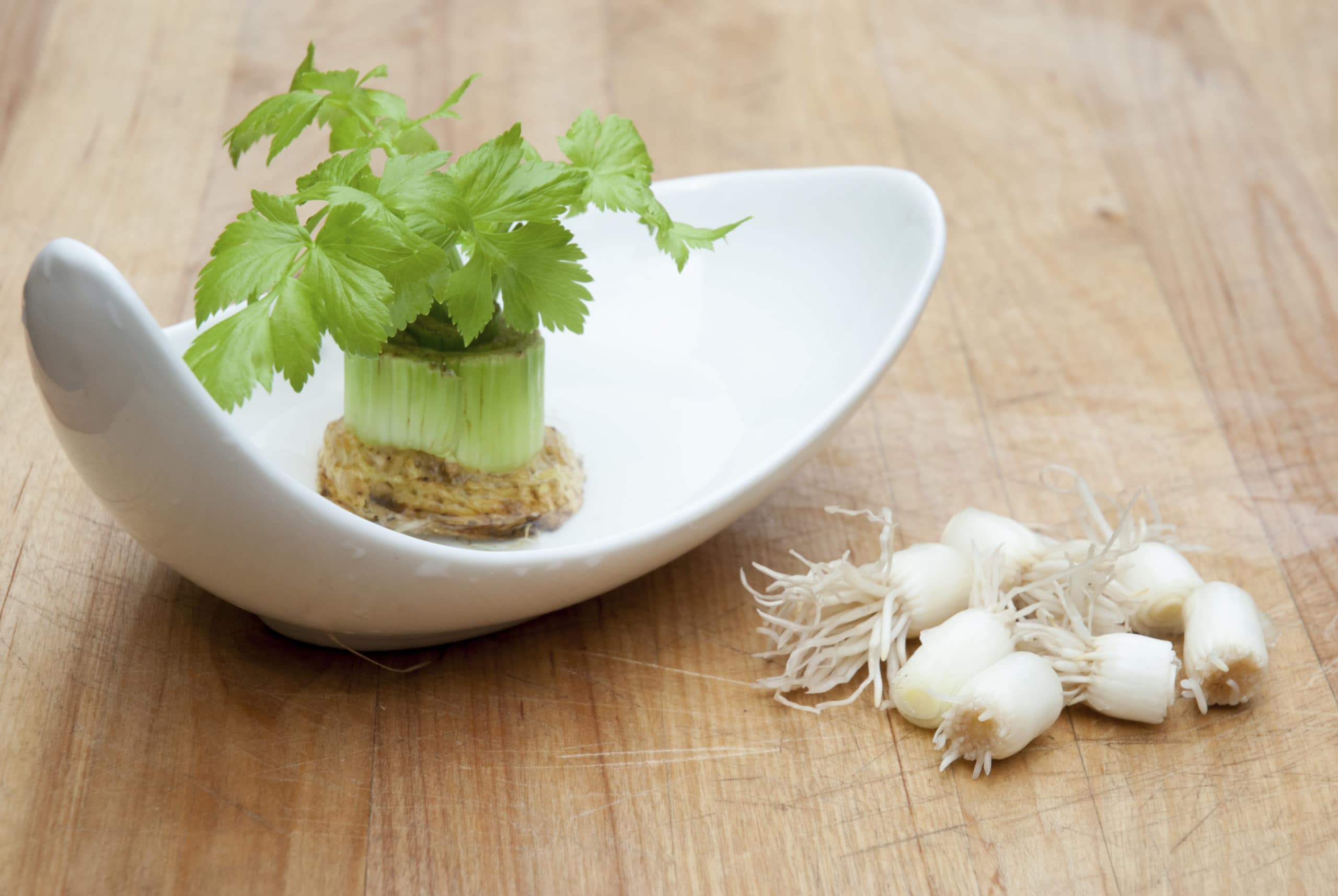Home>Types of Gardening>Edible Gardening>What Are The Fastest Growing Vegetables
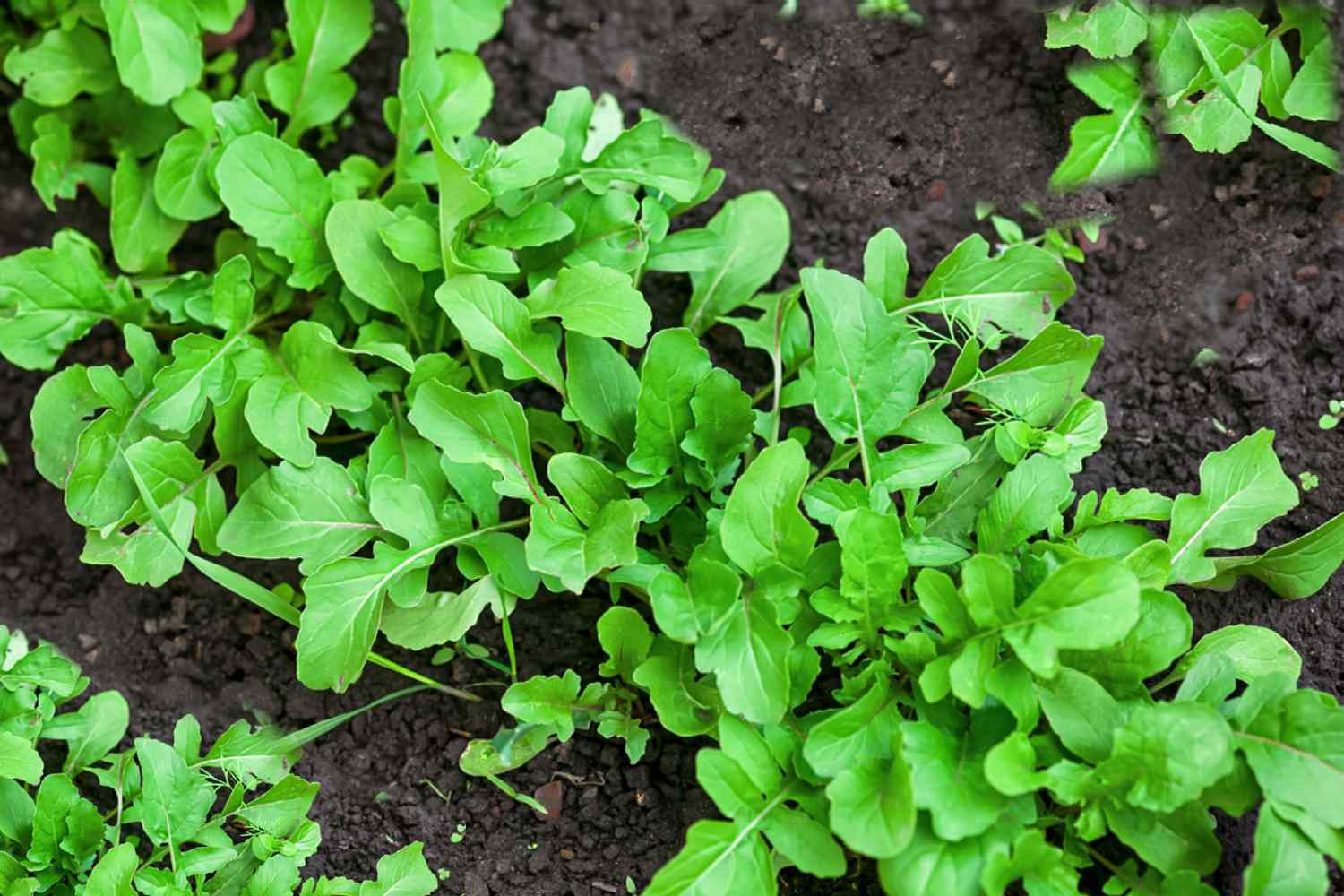

Edible Gardening
What Are The Fastest Growing Vegetables
Modified: January 22, 2024
Discover the top 10 fastest growing vegetables for your edible gardening journey. From radishes to zucchini, grow your own food in no time with these rapid-growers.
(Many of the links in this article redirect to a specific reviewed product. Your purchase of these products through affiliate links helps to generate commission for Chicagolandgardening.com, at no extra cost. Learn more)
Table of Contents
- Introduction
- Reasons for Growing Fast-Growing Vegetables
- Benefits of Fast-Growing Vegetables
- Factors Affecting Vegetable Growth Rate
- List of Fastest Growing Leafy Vegetables
- List of Fastest Growing Root Vegetables
- List of Fastest Growing Fruit Vegetables
- Tips and Techniques for Growing Fast-Growing Vegetables
- Conclusion
Introduction
Welcome to the world of edible gardening! Whether you have a big backyard or just a small balcony, growing your own vegetables can be a rewarding and sustainable way to put fresh and nutritious food on your plate. While all vegetables take time to grow, there are certain varieties that have a quicker turnaround and allow you to enjoy the fruits of your labor sooner.
In this article, we will explore the concept of fast-growing vegetables and why you should consider incorporating them into your edible garden. We’ll delve into the numerous benefits of growing these veggies, discuss the factors that influence their growth rate, and provide you with a comprehensive list of fast-growing leafy, root, and fruit vegetables to get you started.
So why should you set your sights on fast-growing vegetables? Well, for starters, they offer a sense of immediate gratification. Instead of waiting weeks or even months for your vegetables to mature, fast-growing varieties can provide you with harvestable produce in a fraction of the time.
Furthermore, fast-growing vegetables allow you to make the most of limited gardening space. If you have a small backyard or a compact container garden, opting for plants that reach maturity quickly means you can have a higher turnover of fresh produce throughout the growing season.
Additionally, growing fast-growing vegetables provides an excellent opportunity for novice gardeners to gain confidence and see tangible results early on. These plants are often hardy and resilient, making them more forgiving in terms of nurturing and maintenance.
But what exactly qualifies as a fast-growing vegetable? Generally, these are varieties that reach maturity in a shorter period of time compared to other vegetables. Leafy greens, root crops, and certain fruit vegetables are typically known for their faster growth rates.
Factors such as favorable weather conditions, proper soil preparation, adequate watering, and appropriate spacing all play a role in the growth rate of these vegetables. By understanding and optimizing these variables, you can maximize the potential of your fast-growing vegetables.
In the upcoming sections, we will provide you with a curated list of some of the fastest growing leafy, root, and fruit vegetables, along with tips and techniques to ensure a successful harvest. Whether you are a seasoned gardener or just starting your green journey, get ready to embark on a delicious and expedited edible gardening adventure!
Reasons for Growing Fast-Growing Vegetables
Growing fast-growing vegetables in your garden has several compelling reasons that make them a popular choice among both experienced and beginner gardeners. Let’s explore some of these reasons:
- Quick Results: One of the primary reasons for growing fast-growing vegetables is the ability to see results in a shorter time frame. Unlike slower-growing vegetables that require weeks or even months to reach maturity, fast-growing varieties can provide you with fresh produce in as little as a few weeks. This quick turnaround allows you to enjoy the fruits of your labor sooner and maintain a steady supply of homegrown vegetables throughout the growing season.
- Maximizing Garden Space: Space is a precious commodity in many gardens, especially if you have a small plot or limited container gardening options. Fast-growing vegetables can be a game-changer in this regard. Since they reach maturity quickly, you can make the most of limited space by harvesting and replanting new crops multiple times throughout the season. This continuous cycle ensures that you have a productive and abundant garden, even with restricted space.
- Experimentation and Learning: Growing fast-growing vegetables provides an excellent opportunity for experimentation and learning. Their quicker growth allows you to try out different varieties, growing techniques, and innovative gardening methods without a long wait. This hands-on experience can help you understand the specific requirements and preferences of each vegetable, enabling you to fine-tune your skills and become a more knowledgeable gardener.
- Great for Beginners: If you are new to gardening, fast-growing vegetables can be a great starting point. Their robust nature and short growth period make them more forgiving for beginners who are still getting the hang of gardening techniques. Fast-growing vegetables often have fewer pest and disease issues and require less maintenance, making the learning curve less intimidating. As you gain confidence and experience, you can gradually expand your gardening repertoire and try your hand at growing slower-growing or more challenging vegetables.
- Continuous Harvest: Fast-growing vegetables offer the advantage of a continuous harvest. Unlike slower-growing vegetables that tend to produce a single large harvest, fast-growing varieties can be harvested in small quantities at regular intervals. This means you can enjoy a steady supply of fresh and flavorful produce throughout the growing season. Whether you are making a salad, stir-fry, or soup, having a consistent harvest of fast-growing vegetables ensures that you always have ingredients ready at hand.
With these compelling reasons in mind, it’s clear that growing fast-growing vegetables can be a smart and rewarding choice for any gardener. Whether you are looking for quick results, maximizing limited space, or gaining valuable gardening experience, incorporating fast-growing vegetables into your garden can elevate your edible gardening journey to new heights.
Benefits of Fast-Growing Vegetables
Fast-growing vegetables offer numerous benefits that make them a valuable addition to any edible garden. Not only do they provide a quick turnaround for harvest and consumption, but they also offer additional advantages that can enhance your gardening experience. Let’s explore some of the benefits of growing fast-growing vegetables:
- Shorter Time to Harvest: The primary benefit of fast-growing vegetables is the reduced time it takes for them to reach maturity. Instead of waiting for several months, these vegetables can be ready for harvest in as little as a few weeks. This means you can enjoy the fruits (or vegetables) of your labor sooner and have a more continuous supply of fresh produce throughout the growing season.
- Greater Variety: Fast-growing vegetables come in a wide range of varieties, allowing you to explore and experiment with different flavors, textures, and colors. Whether you prefer leafy greens, crunchy root vegetables, or juicy fruit vegetables, you can find fast-growing options to suit your preferences. This variety adds excitement and diversity to your meals, making your homegrown dishes even more enjoyable.
- Flexibility in Planting Successions: The quick growth cycle of these vegetables enables you to plant successions at regular intervals. This means that as soon as you harvest one batch of vegetables, you can immediately sow new seeds or transplant young seedlings, ensuring a continuous and abundant harvest throughout the season. This flexibility allows you to make the most of your garden space and ensures a fresh supply of vegetables for your table.
- Optimal Use of Limited Space: Fast-growing vegetables are ideal for small garden spaces, balconies, or even indoor container gardens. Since they reach maturity quickly, you can grow them in smaller pots, vertical gardens, or tight spaces. This makes them a perfect choice for urban gardeners or those with limited gardening space. You can easily grow a selection of these vegetables, even with minimal square footage.
- Encourages Regular Gardening Practices: Growing fast-growing vegetables requires regular monitoring and care, which can encourage good gardening practices. You’ll need to water, fertilize, and provide proper care to ensure optimal growth and health. This involvement can make you more attentive and dedicated to your garden, fostering a sense of responsibility and satisfaction as you witness the progress of your vibrant fast-growing plants.
- Sustainable and Cost-Effective: By growing your own fast-growing vegetables, you can reduce your reliance on store-bought produce, which is often transported long distances and may have a higher carbon footprint. Additionally, growing your own vegetables can help save money in the long run, as you won’t need to purchase them from the grocery store. Fast-growing vegetables require less time, effort, and resources to grow, making them a sustainable and cost-effective option.
The benefits of growing fast-growing vegetables are clear. Whether you’re looking for a quicker harvest, a wider variety of flavors, or efficient use of limited space, these vegetables offer a multitude of advantages. So roll up your sleeves, prepare your garden beds, and get ready to enjoy the many benefits of fast-growing vegetables!
Factors Affecting Vegetable Growth Rate
The growth rate of vegetables is influenced by several factors that can significantly impact their development and overall productivity. Understanding these factors is key to optimizing the growth of your fast-growing vegetables. Let’s explore the main elements that affect vegetable growth rate:
- Temperature: Temperature plays a crucial role in vegetable growth. Most vegetables have an optimal temperature range in which they thrive. Cool-season vegetables, such as lettuce and spinach, prefer cooler temperatures around 50-70°F (10-21°C), while warm-season vegetables, like tomatoes and peppers, thrive in temperatures between 70-90°F (21-32°C). Proper temperature control ensures faster growth and healthier plants.
- Light: Light is essential for photosynthesis, the process by which plants convert sunlight into energy for growth. Fast-growing vegetables generally require a good amount of sunlight, typically 6-8 hours per day. Insufficient light can lead to leggy or weak plants, causing slower growth. If you have limited access to sunlight, consider using supplemental grow lights to provide the necessary light intensity for optimal growth.
- Soil Quality: The quality of the soil directly affects the growth and development of vegetables. Fast-growing vegetables thrive in well-draining soil that is rich in organic matter. Amend the soil with compost or well-rotted manure to provide essential nutrients and improve soil structure. Ensure the pH level is within the appropriate range for the specific vegetables you are growing, as different plants have different pH preferences.
- Watering: Proper watering is crucial for fast-growing vegetables. Inconsistent or inadequate watering can result in stunted growth or wilting. It’s important to provide a consistent moisture level, ensuring the soil never dries out completely or becomes waterlogged. Watering deeply and infrequently, rather than shallow and frequently, encourages the development of strong root systems and promotes healthier growth.
- Spacing: Proper spacing between plants allows for adequate air circulation and light penetration, both of which are essential for fast and healthy growth. Overcrowding can lead to competition for resources, increased pest and disease susceptibility, and reduced airflow. Consult seed packets or gardening references for recommended spacing guidelines for each specific vegetable to give your plants the space they need to thrive.
- Fertilization: Fast-growing vegetables are typically heavy feeders and benefit from regular fertilization. Prior to planting, incorporate a balanced, slow-release fertilizer into the soil. As the plants grow, provide supplemental fertilizer as needed, following package instructions and taking care not to over-fertilize. This ensures a steady supply of essential nutrients, promoting robust growth and bountiful harvests.
- Pest and Disease Management: Pests and diseases can hinder the growth and development of vegetables. Implementing proper pest and disease management practices, such as regular monitoring, crop rotation, and organic pest control methods, can help prevent infestations and minimize the impact on growth. Swift intervention at the first signs of trouble is crucial to ensure the health and productivity of your fast-growing vegetables.
By paying attention to these factors and taking appropriate action, you can create optimal growing conditions for your fast-growing vegetables. Providing the right temperature and light, maintaining high-quality soil, proper watering and spacing, regular fertilization, and effective pest and disease management are all essential elements in promoting healthy and accelerated growth for your vegetable garden.
List of Fastest Growing Leafy Vegetables
If you’re looking to add a quick burst of green to your garden, fast-growing leafy vegetables are an excellent choice. These leafy greens are not only packed with nutrients, but they also have the advantage of reaching a harvestable stage within a short period of time. Here is a list of some of the fastest growing leafy vegetables:
- Spinach (Spinacia oleracea): Spinach is a versatile and nutrient-rich leafy green that can reach maturity in just 4-6 weeks. Its tender leaves are delicious whether served raw in salads or cooked in various dishes.
- Lettuce (Lactuca sativa): Lettuce is a staple in many gardens, and its fast growth makes it a popular choice. Depending on the variety, lettuce can be ready to harvest in as little as 2-3 weeks. It offers a range of textures and flavors, from crisp romaine to delicate butterhead.
- Arugula (Eruca sativa): Arugula is a peppery and flavorful leafy green that adds a delicious kick to salads and other dishes. It can be harvested in as little as 3-4 weeks, making it a quick and tasty addition to your garden.
- Kale (Brassica oleracea var. acephala): Kale is a nutrient powerhouse and a favorite among health-conscious gardeners. While some varieties of kale take longer to mature, there are certain fast-growing varieties that can be ready to harvest in about 6-8 weeks.
- Chard (Beta vulgaris subsp. cicla): Chard, also known as Swiss chard, is a vibrant and versatile leafy green that adds a splash of color to any garden. Fast-growing varieties of chard can be harvested in approximately 4-6 weeks, allowing you to enjoy its tender leaves and colorful stalks in no time.
These fast-growing leafy vegetables are not only delicious and nutritious, but they also provide a quick and satisfying harvest. Whether you’re a beginner gardener or simply eager to add fresh greens to your meals, these leafy vegetables are sure to impress with their rapid growth and delightful flavors.
List of Fastest Growing Root Vegetables
If you’re eager to harvest vegetables from below the soil, fast-growing root vegetables are the way to go. These plants develop their delicious and nutritious roots in a relatively short period, allowing you to enjoy a bountiful harvest in no time. Here is a list of some of the fastest growing root vegetables:
- Radishes (Raphanus sativus): Radishes are renowned for their rapid growth and vibrant red or white roots. Some varieties of radishes can be ready to harvest in as little as 3 weeks from sowing. These crisp and peppery roots are delightful additions to salads and can be enjoyed on their own as well.
- Turnips (Brassica rapa): Turnips are versatile root vegetables that come in a variety of sizes, colors, and flavors. Certain turnip varieties can reach maturity in about 5-8 weeks. Their roots can be enjoyed roasted, mashed, or added to stews and soups.
- Carrots (Daucus carota subsp. sativus): While carrots may take a bit longer to mature than some other root vegetables, there are fast-growing varieties that can be harvested in approximately 8-10 weeks. These crunchy and sweet roots are not only delicious but also packed with nutrients.
- Beets (Beta vulgaris): Beets are nutritious and flavorful root vegetables that can be enjoyed boiled, roasted, or pickled. Fast-growing beet varieties can reach harvestable size in around 8-10 weeks, providing you with earthy and colorful roots for an array of culinary creations.
- Scallions (Allium fistulosum): While scallions are not traditional root vegetables, they are worth mentioning for their speed of growth. These onion-like plants can be harvested for their green tops in as little as 3-4 weeks. They offer a mild and fresh flavor to various dishes.
These fast-growing root vegetables not only provide a quick turnaround for your vegetable garden but also offer a diverse range of flavors and culinary possibilities. Whether you’re craving the crisp and spicy radishes or the sweet and crunchy carrots, these root vegetables will satisfy your taste buds and reward your efforts with their rapid growth.
List of Fastest Growing Fruit Vegetables
If you’re looking to add some sweetness to your garden, fast-growing fruit vegetables are a fantastic choice. These plants produce edible fruits within a relatively short period, allowing you to enjoy the flavors of your labor in a timely manner. Here is a list of some of the fastest growing fruit vegetables:
- Cucumbers (Cucumis sativus): Cucumbers are refreshing and versatile fruit vegetables that can be enjoyed fresh or pickled. Fast-growing varieties of cucumbers can produce mature fruits in as little as 6-8 weeks. Their smooth texture and cool flavor make them a popular choice for salads, sandwiches, and snacks.
- Zucchini (Cucurbita pepo): Zucchini is a versatile and prolific fruit vegetable that can be harvested young and tender, or allowed to grow larger for different culinary uses. Certain zucchini varieties can reach maturity in approximately 6-8 weeks, providing you with an abundant harvest for a variety of dishes, from fritters and stir-fries to zucchini bread.
- Green Beans (Phaseolus vulgaris): Green beans, also known as snap beans or string beans, are tender and flavorful fruit vegetables. Fast-growing bush bean varieties can produce fully developed beans within 7-8 weeks, offering you a delicious harvest that can be enjoyed steamed, sautéed, or added to soups and stews.
- Cherry Tomatoes (Solanum lycopersicum): Cherry tomatoes are small, bite-sized fruits bursting with flavor. These fast-growing fruit vegetables can ripen in as little as 45-60 days, offering a continuous harvest throughout the season. Enjoy them fresh in salads, roasted, or as a tasty snack straight from the vine.
- Peppers (Capsicum annuum): Peppers come in various sizes, shapes, and heat levels, offering a wide range of culinary possibilities. While some pepper varieties may take longer to mature, certain fast-growing types can produce sweet or mildly spicy peppers within 60-70 days. These vibrant and flavorful fruits are perfect for stuffing, grilling, or adding a pop of color to your meals.
These fast-growing fruit vegetables not only add sweetness and vibrancy to your garden but also provide you with a quick harvest of delectable produce. Whether you’re enjoying the crisp and refreshing cucumbers, the versatile zucchini, or the flavorful cherry tomatoes, these fruit vegetables are sure to satisfy your taste buds and add a delicious touch to your culinary creations.
Tips and Techniques for Growing Fast-Growing Vegetables
Growing fast-growing vegetables requires some specific techniques and care to ensure optimal growth and a bountiful harvest. Here are some tips and techniques to help you successfully cultivate these quick-growing plants:
- Choose the Right Varieties: When selecting fast-growing vegetables, choose varieties that are known for their quick maturity. Look for terms like “early-maturing” or “fast-growing” on seed packets or plant labels to make sure you’re selecting the right varieties for your edible garden.
- Start with Healthy Soil: Prepare the soil before planting by removing any weeds, rocks, or debris. Work in compost or well-rotted manure to improve soil fertility and drainage. Fast-growing vegetables benefit from nutrient-rich soil, so be sure to provide a good foundation for their growth.
- Sow Seeds Successively: To extend your harvest and enjoy a continuous supply of fast-growing vegetables, sow seeds successively. This means planting a new batch of seeds every few weeks to stagger their growth and ensure a constant harvest throughout the growing season.
- Provide Adequate Water: Fast-growing vegetables have a higher need for water due to their quick growth rate. Regularly water your plants, keeping the soil consistently moist but not waterlogged. Mulching around the plants can help retain moisture and reduce evaporation.
- Optimize Sunlight: Ensure your fast-growing vegetables are receiving at least 6-8 hours of direct sunlight each day. If you have limited sunlight in your garden, consider utilizing reflective surfaces or using containers that can be moved to maximize sun exposure.
- Monitor for Pests and Diseases: Regularly inspect your plants for any signs of pests or diseases. Fast-growing vegetables can be susceptible to certain pests, such as aphids or caterpillars. Implement organic pest control methods like handpicking or using natural sprays to manage infestations and prevent damage.
- Support Climbing Plants: If you’re growing vining vegetables like cucumbers or beans, provide trellises, stakes, or fences for them to climb. This not only saves space but also helps maintain proper airflow, reduces the risk of disease, and makes harvesting easier.
- Harvest Promptly: Fast-growing vegetables are at their peak flavor and texture when harvested at the right time. Read up on the specific harvesting guidelines for each vegetable variety. Regularly check for maturity and harvest promptly to maximize flavor and encourage continuous growth.
- Rotate Crops: To prevent nutrient depletion and minimize the risk of disease build-up, practice crop rotation in your garden. Avoid planting fast-growing vegetables in the same spot year after year. Instead, rotate them with other plant families to promote soil health and long-term garden productivity.
- Keep Records and Learn: Maintain a gardening journal to record planting dates, growth observations, and harvest quantities. This will help you track the success of different varieties and techniques, allowing you to learn from each gardening season and make improvements in future years.
By following these tips and techniques, you’ll be well on your way to growing a thriving and productive garden of fast-growing vegetables. From selecting the right varieties to providing optimal growing conditions, your efforts will be rewarded with a continuous supply of delicious and nutritious homegrown produce.
Conclusion
Growing fast-growing vegetables in your edible garden offers a multitude of benefits and opportunities. These vegetables provide a sense of immediate gratification, allowing you to enjoy a harvest in a fraction of the time compared to slower-growing varieties. Fast-growing vegetables also maximize garden space, making them a perfect choice for small plots or container gardens.
Fast-growing leafy vegetables, root vegetables, and fruit vegetables offer a wide range of options to suit every gardener’s taste and preference. From the peppery crunch of radishes to the juicy sweetness of cherry tomatoes, these vegetables provide a delightful and rewarding gardening experience.
Understanding and optimizing the factors that affect vegetable growth rate, such as temperature, light, soil quality, watering, spacing, fertilization, and pest management, is essential for successful cultivation. By following proper techniques and employing some proven tips, you can ensure the optimal growth and health of your fast-growing vegetables.
Whether you’re a seasoned gardener or just starting your edible gardening journey, fast-growing vegetables offer a satisfying and enjoyable experience. From the excitement of watching tiny seeds sprout to the delight of harvesting your own fresh produce, growing these vegetables allows you to connect with nature and nurture your green thumb.
So, roll up your sleeves, get your hands dirty, and embrace the world of fast-growing vegetables. Create a garden filled with vibrant greens, crunchy roots, and bountiful fruits. Not only will you be rewarded with quick and plentiful harvests, but you’ll also gain valuable knowledge and satisfaction as you cultivate these delicious additions to your plate.
